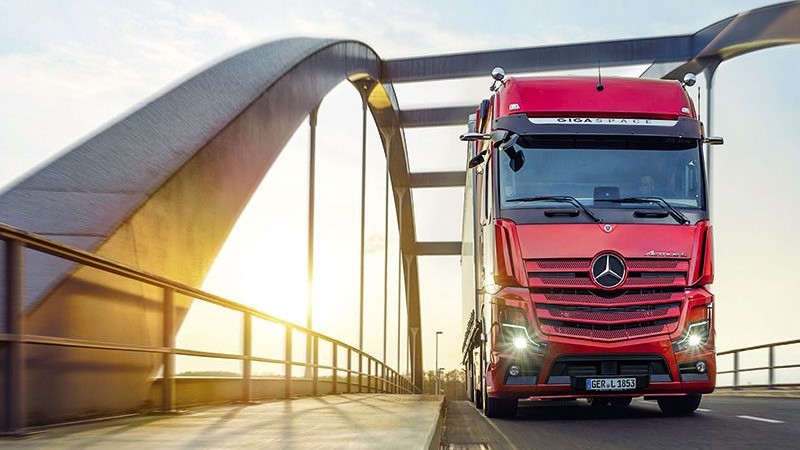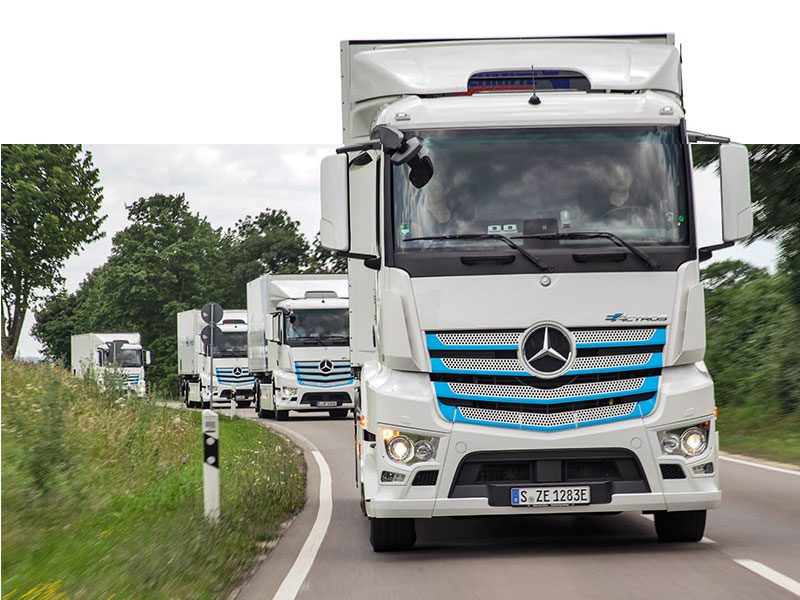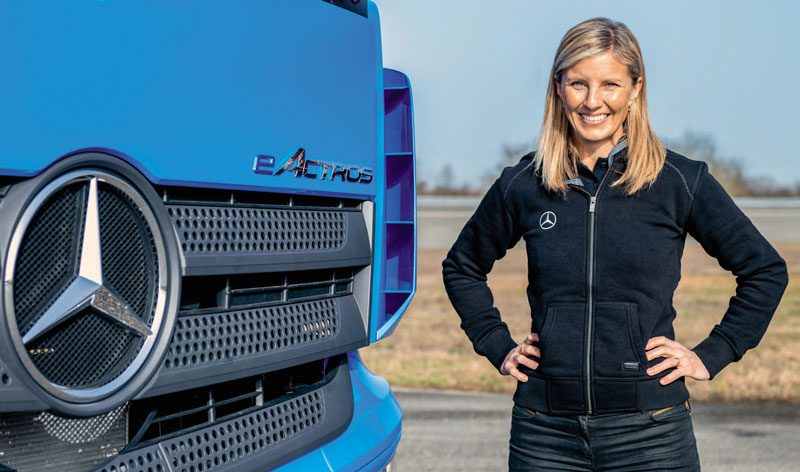
Exclusive article in association with

We catch up with Karin Rådström, member of the board of management for Daimler Truck AG and CEO of Mercedes- Benz Trucks, who says it’s an amazing time to be in the transport industry and experience the transition to lower- emission vehicles.

Last May, during Strategy Day, Daimler Truck set out its ambitions in the European and South American commercial vehicle business. So far, are you on track with those challenging targets?
The long-term target for Mercedes-Benz trucks is to reach double-digit figures [market share]. I think that’s where we need to be. The plan towards that target is working on our top line – to sell more and be more successful in specific segments to improve our service business and reduce costs, including personnel and production and material costs. We’re attacking more or less everywhere, and so far, it’s running according to plan.
In terms of top-line, bottom-line cost focus, etc, I would say we have a good programme in place that we are following very closely – tracking all the activities, making sure we move them forward, increasing the implementation of our ideas. So far, it’s going very well.
Obviously, there is still a lot of work to do. We are about halfway through, but I feel very confident that we are on a good path.
In particular, which plans are you implementing? Can you explain them in some detail?
Overarching themes are customer-focus and looking at our product portfolio in markets such as Brazil. We have got rid of some products and models that we don’t market anymore, and we are trying to really focus on the ones the customer demands.
In Europe, we have had a very big product portfolio, and we have streamlined it with very little customer impact. It will allow us to invest more into the products that we actually need.
We want to penetrate certain segments better, and since we talk about Actros L and Actros F, obviously our long-haul segment in Europe and mainly with small to medium customers is where we are doing a lot of activity and where we think we have potential to grow market share.
In the service segment, there’s potential in the current service business and selling more contracts, having better parts availability. Also, with new technologies – that is a new opportunity for us to be more solutions-focused.

Daimler Truck sees significant growth potential in services to increase the revenues on the service portfolio from the current 30% towards 50% by 2030. How can you achieve this target?
We have a lot of potential in traditional services. When we look at service-contract penetration, we are really good in some markets and not so good in other markets, so we try to focus on getting that up, and that also means that we will sell more parts and services when we have a contract.
One of our KPIs is the turnover of parts and services on the 10-year rolling fleet in each market, and we also see that we have huge regional differences, so we have started working in a more structured way to see what we are doing right, so we can measure that we are really making progress.
Mid-term, we are starting to prepare for having truck- dedicated parts logistics, and this will be a big difference for our customers since today that is all handled through the car organisation, and the need is a little bit different.
With e-mobility and hydrogen, we see big potential along the ecosystem side, and with digital services, we have a lot of growth potential. It’s a hard target, but there is a lot of potential to improve.

Electrification – both with BEV and FCEV vehicles – is one of the main pillars of the Daimler Truck strategy in the coming years. Do you think Daimler can still achieve 60% Zero Emission Vehicle volumes by 2030, despite market disturbances (increase in raw material prices, microprocessor shortage, inflation, cyclical business ups and downs)?
The 60% is based on when we do scenarios of TCO (total cost of ownership) parity, so it’s quite well worked through – meaning that it would make sense for more than 60% of our customers to buy an electric truck instead of a diesel one. Whether it is by 2030 or 2032, the direction is clear.
What scenario for alternative trucks do you foresee (and prefer)? That is, a very slow-rate uptake for some years, followed by an exponential increase of volumes or, conversely, a steady, linear increase?
It will be based on the TCO development. One part of that is the subsidy programmes. We saw that with city buses – suddenly, a city is going to be emissions-free and then you don’t need TCO because it’s just decided, and we start to see these zero-emission zones and maybe that will make certain applications transition faster, even though the pure TCO is not there. It’s super hard to predict, but we are quite prepared for different scenarios.
As an engineer, I like the idea of a steady increase and not this ‘hockey stick’ curve where everything happens in the fifth year. That might be the case, and if it is, we have planned to have flexibility in our production system to gear off between the different technologies.

Which one of these elements makes the difference in alternative- truck uptake by the market: reliable BEV/FCEV vehicles with a TCO equal (or better) to a diesel: offering the customer a complete solution portfolio, economic incentives, availability of a suitable charging network?
Some businesses are already willing to pay 20% more for transport if a sustainable zero- emission truck is used. That’s still quite unusual, but we’ve started to see it from the big companies such as IKEA and Proctor & Gamble. But if that accelerates – and I think it will – that will also be part of the TCO, so maybe it will make sense to transition faster.
But our customers are generally very logical people, and they will do the switch when it makes sense. It will be TCO-deciding, but into that, I put what price can you get from your customer? What subsidies? What does the tax on CO 2 look like? But eventually, it will be TCO- driven for sure.
It’s a really exciting time – what an amazing time to be in this industry, to get to experience this big transition.





